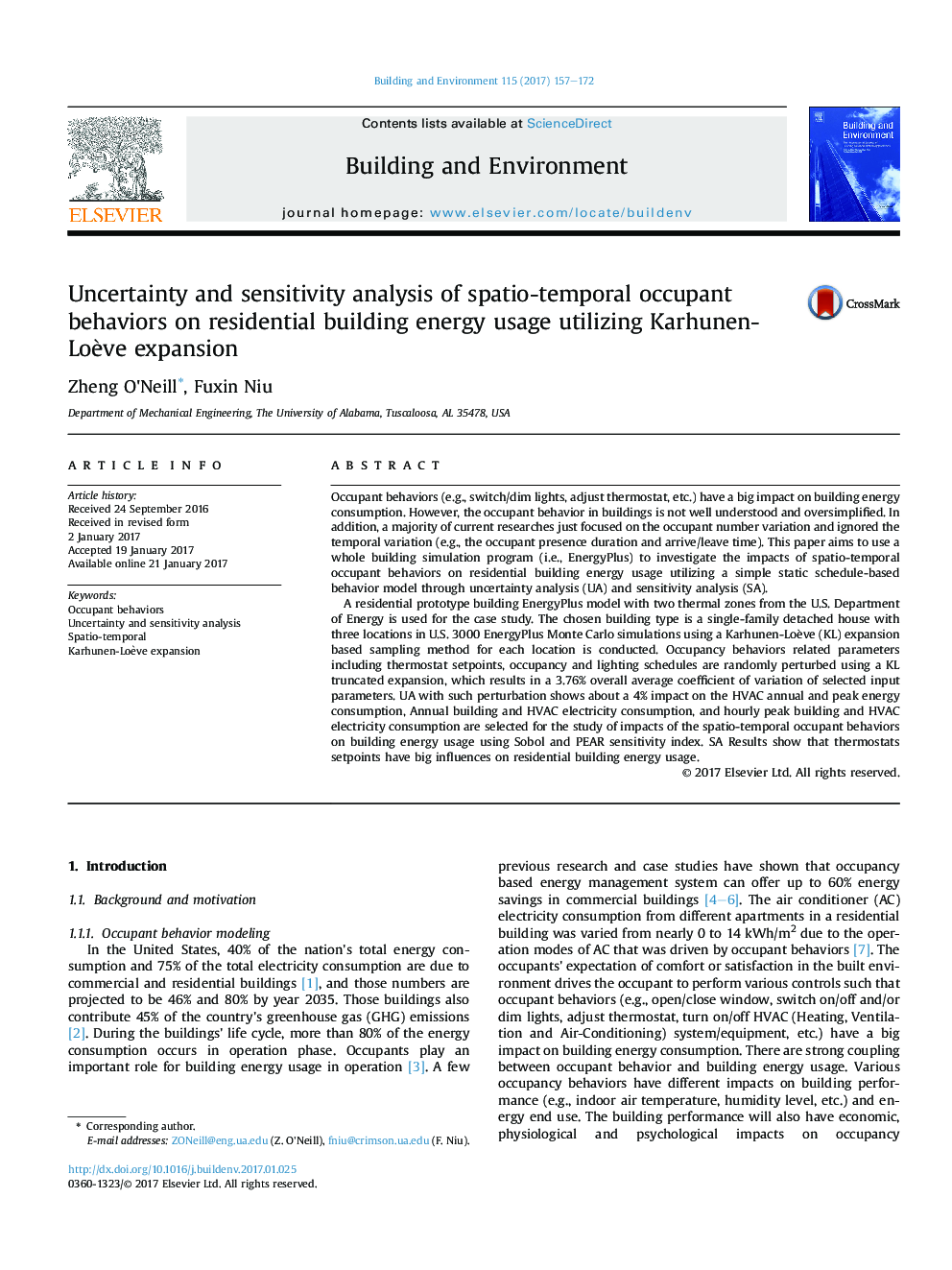| Article ID | Journal | Published Year | Pages | File Type |
|---|---|---|---|---|
| 4911541 | Building and Environment | 2017 | 16 Pages |
Abstract
A residential prototype building EnergyPlus model with two thermal zones from the U.S. Department of Energy is used for the case study. The chosen building type is a single-family detached house with three locations in U.S. 3000 EnergyPlus Monte Carlo simulations using a Karhunen-Loève (KL) expansion based sampling method for each location is conducted. Occupancy behaviors related parameters including thermostat setpoints, occupancy and lighting schedules are randomly perturbed using a KL truncated expansion, which results in a 3.76% overall average coefficient of variation of selected input parameters. UA with such perturbation shows about a 4% impact on the HVAC annual and peak energy consumption, Annual building and HVAC electricity consumption, and hourly peak building and HVAC electricity consumption are selected for the study of impacts of the spatio-temporal occupant behaviors on building energy usage using Sobol and PEAR sensitivity index. SA Results show that thermostats setpoints have big influences on residential building energy usage.
Related Topics
Physical Sciences and Engineering
Energy
Renewable Energy, Sustainability and the Environment
Authors
Zheng O'Neill, Fuxin Niu,
